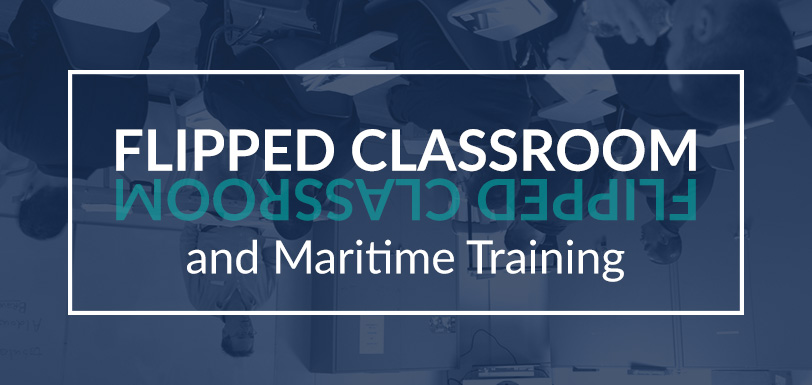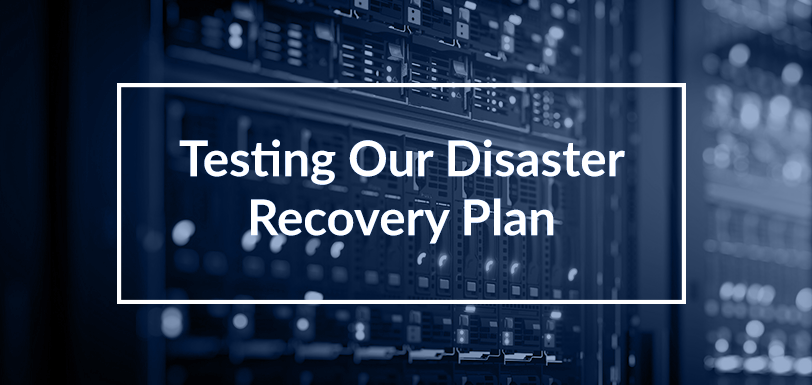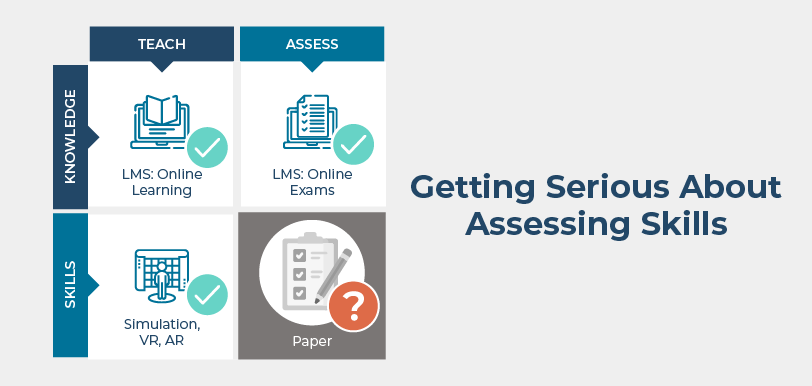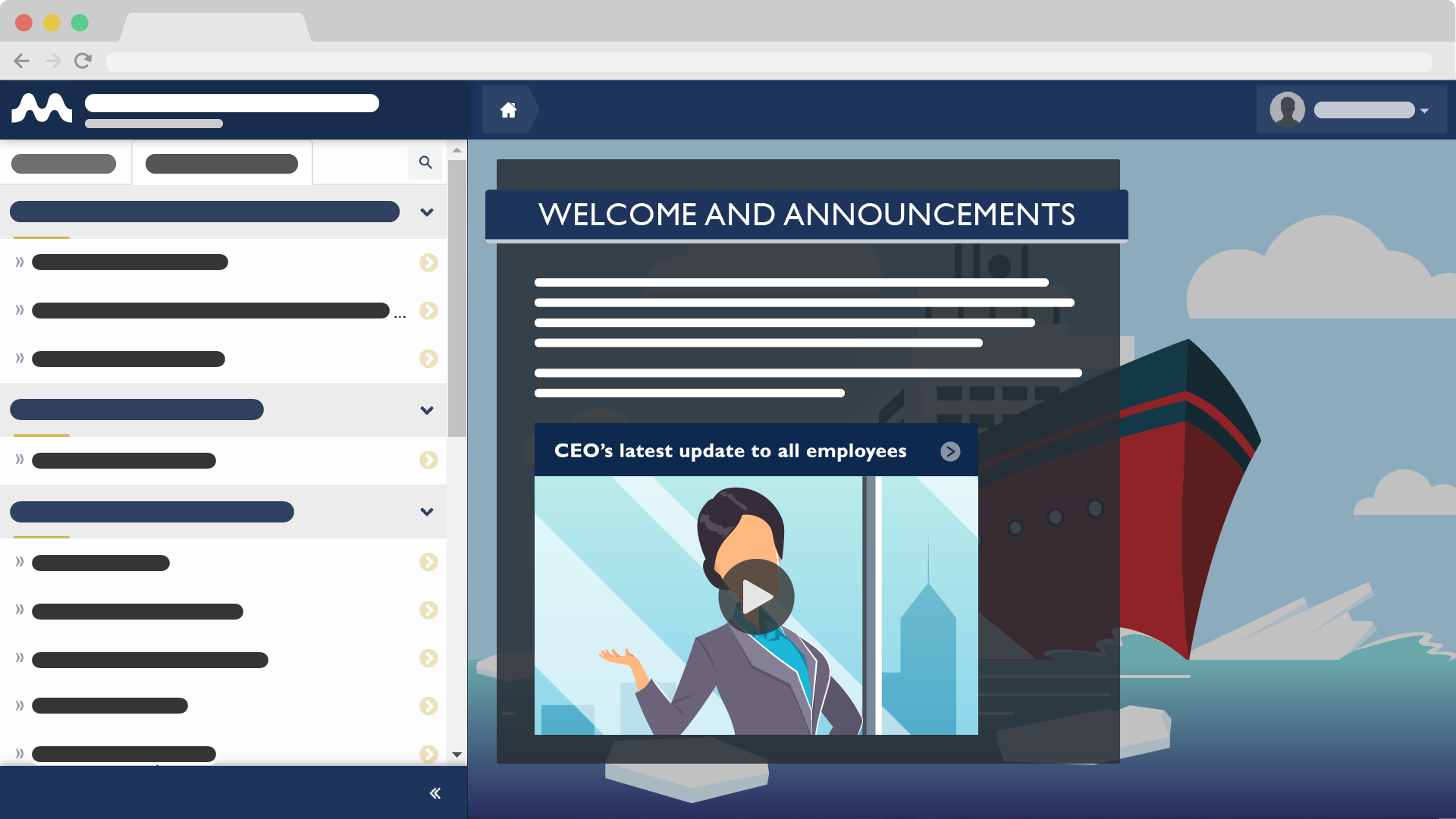The “Flipped Classroom” and Maritime Training
Dec 7, 2017 Murray Goldberg 0 Maritime Training, Student-Centered TrainingIntroduction
Every once in a while a new idea on how to improve learning makes the rounds in education circles. Although these ideas are not typically born of the maritime industry, they almost all have implications within it, and trainers should be on top of them.
The subject of this article is another idea which is beginning to make a real difference in higher education. In fact, one of our (Marine Learning System) customers deploys a form of it for the trainees that come through their maritime simulation facility in Europe.
So – what is this trend?
It is the “flipped classroom”.
What is the Flipped Classroom?
“Flipped classroom” is a name for a training method which, to me, makes complete sense. In fact, you may already be using it to one degree or another without realizing you are doing so. Despite the images that are conjured up by the name, flipped classrooms look exactly the same as regular classrooms. That is, at least, until the learning starts.
The Traditional Training Experience
To understand the flipped classroom, first consider the traditional classroom experience. There, a trainer typically stands at the front of the room and lectures. This is largely a one-way experience where information is (hopefully) transferred from trainer to trainee. Aside from the occasional questions from the students, most classroom experiences consist of a lecturer speaking to an audience.
Another part of this traditional learning experience is what happens outside the classroom. Here, the trainer may assign “homework” or other practice for the trainees to do on their own time. In the maritime industry these assignment may be standard paper-based assignments, or it could be hands-on work such as exercises with bridge equipment, simulators, and so on. Some of this work may be supervised by a trainer or it may be done independently by the trainee.
What is Wrong with Traditional Training?
The flipped classroom advocates say that there are two things wrong with this model of teaching. The first is that having a trainer deliver a one-way lecture is an enormous waste of time. Trainer time is a valuable, expensive and limited resource. It could be better spent than by delivering the same lecture over and over again to new groups of trainees.
I know this first hand. As much as I have always loved to lecture, the courses I taught at university generally consisted of 33 hours of lecture which I gave, mostly unaltered, year after year.
The second problem with traditional training is that the outside-class assignments or practice is often done unsupervised. Unless there is additional trainer time available outside of lectures, trainees are on their own to perform the practice or assignment. These experiences could really benefit from the wise counsel of an experienced trainer.
How Does the Flipped Classroom Change the Model?
Given the problems above, the solution becomes pretty clear. In the flipped classroom, the in-class experience and the outside-class experiences are “flipped”.
Instead of lectures happening during class time, trainees are asked to watch videos of lectures (or read some learning module, or both) before class. Then, when the trainees arrive in the class, trainees are able to ask questions, participate in discussions, and do problems and practice with the guidance of the trainer. Simple, but very different.
The one-way lecture experience does not require a “live” lecturer. Video lectures or other training content can be used as a substitute for the lecture experience with very little negative effect. Once that is done, the trainer is freed from lectures and their time can now be used doing more educationally effective interactive work with the trainees (the “in-class” part of the flipped classroom). They can work on problem sets, engage in practice, or hold discussions. These activities all benefit greatly from the presence and guidance of the trainer.
In some sense, this is what an experienced trainer is meant to do – observe trainees, give practical guidance, correct performance, and help trainees gain skills. The knowledge transfer part (the lecture) has many effective and viable alternatives. Why not use them and put the trainer to work doing real training? This is the flipped classroom.
Benefits and Drawbacks
The primary benefit of the flipped classroom is pretty clear – it creates the opportunity for more interactive, directed training with the trainer. It allows the trainer to observe the trainees much more closely and much earlier in the training experience. This makes early course corrections possible and allows the trainee to benefit from the wisdom of the trainer much more effectively.
The main drawback is that videotaped lectures remove the ability for trainees to ask questions during lecture. The trainer is also unable to adapt the lecture to the needs of the trainees present. These are both real issues, but most argue that there are things we can do to mitigate the effect, and that the benefits outweigh the drawbacks.
First – with modern learning technologies, trainees can, in fact, ask questions during lecture. The questions may be asked online in a training forum, in a chat with the trainer, or in a community of learners who are taking the same course. The questions can also be asked during the beginning of the next classroom experience – where there is now much more time available for discussion.
Second – although it is true that the video lectures will not adapt to the trainee, there are advantages. Trainees can pause or skip over parts according to their own existing knowledge and learning abilities. If they need more information they can pause and seek it from other sources. If they already know the material, they can skip to the next section rather than waste time. In this way, video or other media adapts to the personal needs of the learner much better than lectures can.
And finally, another advantage is that a video-based lecture will often have the benefit of planning and careful execution. There is the opportunity for “star” trainers with a great deal of skill and experience to be the ones lecturing in the video. The trainer in class does not need to be the same one who is on the video. This allows a truly great lecturer or a uniquely qualified trainer to have a much broader effect than they could in person.
Thus there is an argument that these lectures will be “better” than a typical classroom lecture. At the very least, they will be far more standardized.
A Rose by Any Other Name
Perhaps the flipped classroom model sounds a bit familiar to you? If you are a regular reader of this blog, you will have read quite a bit about one of my favorite topics – blended learning.
Recall that blended learning is the use of more than one “media” in a training experience. I typically talk about the combination of a classroom and an eLearning experience. The “flipped classroom” is, of course, one intelligent form of blended learning. And it speaks to the power of blended learning in general.
The main premise of blended learning is that we can provide a wider variety of learning experiences to our trainees. This can appeal to a broader range of learning styles and therefore provide a more comprehensive learning experience. It also recognizes that different modes of learning each have their own strengths and limitations. By combining them, we have a broader range of strengths to draw upon, and the limitations of one are nullified by the strengths of the other. The end result is that study after study confirms better training outcomes with blended learning than with traditional learning.
The flipped classroom has all the advantages listed above, plus it frees up the lecturer to spend time on the really effective, high-value interactive experiences with trainees.
I fully expect that when the research studying the effect of the flipped classroom is mature and presents a definitive answer as to its effectiveness, we will find that it is a great improvement over the traditional classroom.
Implications for the Maritime Industry
This is already happening in some form in the maritime industry – and there are tools available now which would easily allow you to “flip” your existing traditional maritime training classroom. Let’s first look at an example of what is happening now, and then discuss how you can pretty easily create an experience of this type in your maritime training.
An Example
We, at Marine Learning Systems, have a customer that provides simulation training in western Europe. They provide a range of training from bridge resource management, NACOS/ECDIS, to engine room simulation training, and more. They are great to work with and take training techniques and training outcomes very seriously.
In the past, when trainees arrived at the facility, although they have done some pre-reading, there was a fair bit of time spent in lectures. This was required to fill any “holes” in the knowledge of some of the trainees. The lectures also provided the new knowledge required to prepare them for their time in the simulator. Both of these activities could have been accomplished effectively prior to arriving at the simulation facility. This would remove some of the “knowledge transfer” activities from lectures and allow more discussion, interaction and (most importantly) more simulator time “in class”.
In order to make this happen, the facility made much of the required knowledge available online through various media (video lectures, written content, etc). Trainees use that material before they come to the facility. In addition, the facility administers an examination to ensure that the trainees did the work and learned the material to the required degree. This is all accomplished through our LMS (learning management system).
Trainees now all arrive to class with a much more uniform, and much higher, level of knowledge. In addition, the need for lectures are greatly reduced and ultimately the trainer’s time is freed up for more questions, discussions, group work and simulator time.
Conclusion
I would argue that the flipped classroom is actually highly suited to the maritime industry and helps to solve problems which exist in maritime training.
If you would like to be notified when that blog is available, and have not already done so, please click here to sign up.
Until then, thanks for reading and sail safely!
Follow this Blog!
Receive email notifications whenever a new maritime training article is posted. Enter your email address below:
Interested in Marine Learning Systems?
Contact us here to learn how you can upgrade your training delivery and management process to achieve superior safety and crew performance.






